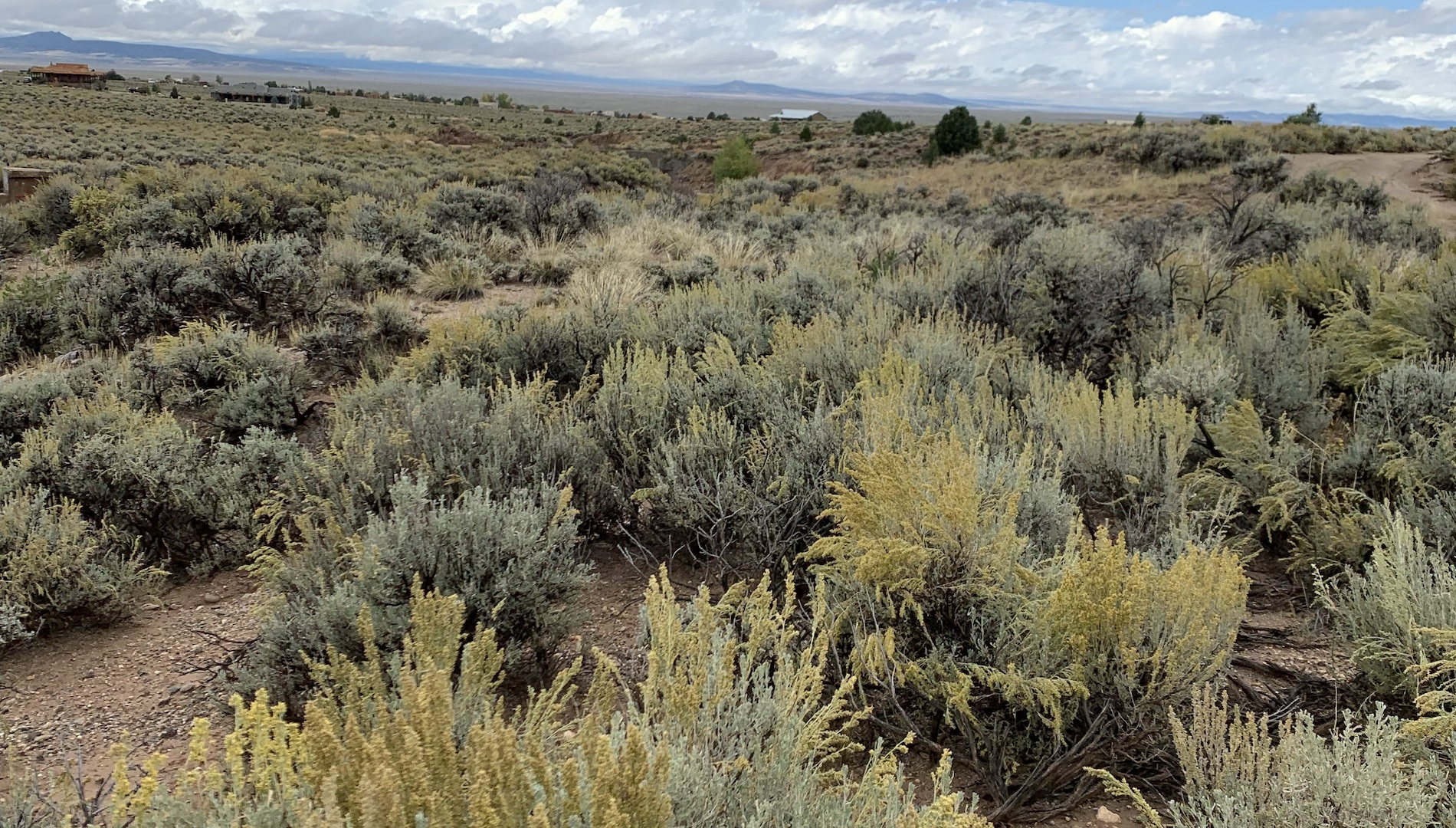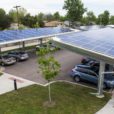In the 1990s, an Indigenous tribal leader noticed something peculiar happening in the Alaskan woods: cedar trees, sacred to Native communities across the state, were dying in unprecedented quantities. Cedar, which has both a material and spiritual purpose for many Indigenous people, was browning, rotting, and ultimately dying.
Eric Morrison, the former Deputy Director of Natural Resources for the Sitka Tribe of Alaska, was alarmed. His more than 4,000-member tribe in Southeastern Alaska had already observed a number of unnatural occurrences.
“I remember calling the forest service, and asking ‘do you know what’s going on with the cedar?’” Morrison told me this week over the phone. “They put a few guys on to explore it to try to figure out why this was happening.” Eventually, the forest service discovered that about 75,000 acres of cedar, spanning from the city of Ketchikan all the way up north to Hoonah, were dead.
The degradation of these trees is particularly devastating due to cedar’s intrinsic value to the Indigenous way of life. For centuries, in the Pacific Northwest, tribes used hollowed-out logs of cedar to make canoes, built homes from cedar planks, and made clothing with cedar fibers. Cedar is also frequently used in tribal ceremonies, and holds an immense spiritual significance that is associated with prayer and healing. The dying of these sacred trees, therefore, was shocking to Indigenous communities.
We now know that the proliferation of dead cedar is largely a result of climate change. The trees’ roots, which are hollow and fragile, rely on snow blankets for insulation, and due to changing weather patterns, that was no longer occurring.
“We had these weird, erratic winters,” Morrison said. “We’d get some wet snow, and then it would thaw and freeze again. The freezing of the snow, after it thawed, would affect the cedar roots and kill them.”
Today, there are nearly 500,000 acres of dead and dying cedar across Alaska, just one of countless climate change impacts that indigenous communities are confronting. Despite the fact they are the least responsible for the climate crisis, they bear disproportionate burdens from its effects.
Deep-rooted connections to, and understanding of, the natural environment is at the core of Indigenous responses to climate change. Many in the environmental movement today are calling upon this Indigenous knowledge and tradition to inform our collective response to the climate and ecological crisis.

The ongoing fight for justice
Native Americans — the heterogenous, Indigenous people living in what is now the United States — have been subject to exploitation, discrimination, and genocide since European settlers first arrived in the Americas.
After US independence, the federal government increasingly encroached upon Indigenous territories, and forced Native Americans onto reservations. In 1851, California’s first Governor, Peter Burnett, proclaimed “a war of extermination” that resulted in about 80% of the state’s Indigenous population dying in a twenty-year span.
Want to know more about these crimes? Read Bad Indians: A Tribal Memoir, a remarkable book that recounts the establishment of missions in California and the impact on Indigenous people — then and today. Deborah Miranda uses documents, photos, and first-hand accounts to tell her family’s story.
Last year, California Governor Gavin Newsom (D) formally apologized for his state’s genocide. But while many governmental bodies in the US have acknowledged the violence that was inflicted upon Indigenous communities, none have come close to fully rectifying the legacies of this persecution and destruction.
Today, Indigenous people continue to fight for food and water security, as well as the protection of sacred sites. It’s an ongoing struggle that Indigenous communities across the country have endured for centuries. In her book As Long as Grass Grows, Indigenous researcher and activist Dina Gilio-Whitaker explores these current injustices.
“As the Standing Rock story illustrates, the assaults have never ended,” Gilio-Whitaker writes. “It also illustrates the trend in the past couple of decades of the uniting of the environmental movement with Indigenous peoples’ movements all over the world, something that hasn’t always been the case.”
Currently, six million Indigenous people live in the US, largely in territories in New Mexico, Arizona, Oklahoma, Montana, Wyoming and the Dakotas. In some of these states, indigenous communities work collaboratively with the state government on climate solutions. In others, they are largely ignored and left to their own devices.
While the Trump Administration continues to bail out fossil fuel industries and disrupt critical climate negotiations, Indigenous communities on the frontlines of the crisis are transitioning to clean energy, releasing comprehensive climate adaptation plans, and curbing their emissions. Indigenous knowledge, and resistance to government and corporate incursions on land, presents a critical approach to environmental justice and activism.
“We’re going to keep doing what we do and argue our arguments, because it’s the right thing to do, whether the politics are with or against us,” said Morrison, who now works as the Tribal Administer for the Salamatof Tribe.

Adapting to a Climate in Crisis
Indigenous communities since the dawn of time have possessed the knowledge and self-restraint to live in harmony with ecosystems and all living beings within them. Despite having always understood the pillars of what we now call sustainability, they currently face some of the first and fastest-moving impacts of the climate crisis. Rising sea levels, extreme weather events, increasing temperatures, and melting glaciers are all phenomena tribes must respond and adapt to. More than 50 tribes have released comprehensive climate adaptation plans to date.
In Alaska, where sea ice is receding and temperatures are rising twice as fast as any other US state, Indigenous communities are particularly intent on confronting the impacts of the crisis. The state is home to the country’s highest percentage of Native people — about 14%.
The Alaskan Federation of Natives (AFN), a statewide organization that represents more than 140,000 Native people, declared a climate emergency in October, and tribes like the Atqasuk, Kiana, Kivalina, and Noatak have released assessments of climate change-related health impacts. These plans vary among tribes, but largely delineate adaptation strategies to address flooding, erosion, and extreme weather.
While Alaskan tribes implement climate resilience measures, Governor Mike Dunleavy (R) has disbanded the state climate change task force, and repeatedly prioritized handouts to the oil industry over protections for tribal citizens. Central to this issue is the fact that the Alaskan government does not recognize these tribes despite their federal recognition (legislation has been introduced to change that).
“In order to work with the state of Alaska, we must overcome a big hurdle,” Morrison said. “It’s almost impossible to partner with someone that doesn’t recognize you.”
To support efforts to provide Alaskan Native communities with a voice at all levels of policy making, support Native Peoples Action, an Indigenous-led organization working to achieve equitable governance structures that center Indigenous values and people.
Indigenous adaptation efforts span far beyond Alaska; the Inter-Tribal Council of Michigan, Swinomish Tribe in the Northwest, and Karuk Tribe in Northern California are just some more examples of tribes that have championed adaptation efforts in the country.
Across these plans, tribes have outlined best resource-management practices, including relocating invasive plants and animals, redirecting agricultural runoff, and engaging in prescribed burning to reduce wildfire risk. Ecosystem conservation and regeneration are critical components of any climate plan, and we’d be wise to lean on Indigenous leaders for their expertise.

Spearheading Clean Energy Transitions
While land continues to be stolen from tribes to keep making way for fossil fuel development, Indigenous communities around the nation have accelerated their transition toward renewable energy within tribal jurisdictions. Beyond solely achieving emissions-reductions, large-scale renewable energy deployment is an opportunity for tribes to gain energy sovereignty, save money, and provide electricity access to many who previously lacked it.
For the last decade, the Winnebago Tribe of Nebraska has been installing solar panels in mass quantities, reducing annual energy costs by tens of thousands of dollars. The Winnebago have funded this project with federal stimulus dollars received from the American Recovery and Reinvestment Act (ARRA) signed after the 2008 recession. Looking back at such investment might be particularly relevant today, as the federal government spends substantial resources and capital to recover from the COVID-19 economic crisis. If stimulus money is properly prioritized, this could be a critical moment to fund clean energy projects and advance the green transition alongside ensuring sovereignty and equitable access.
Winnebago’s success in clean energy advancement is no rarity among Indigenous communities in the US. In 2010, the Choctaw Nation of Oklahoma moved to purchase enough wind energy to power the entire reservation.
“We’re investing in the protection of our future and our resources, and that’s something you can’t put a price tag on,” said Chocktaw Assistant Chief Gary Batton after a major contract with Oklahoma Gas and Electric (OG&E) was signed.
Check out a phenomenal article “Building a Resilient Indigenous Future with Sustainable Energy” by Pennelys Droz, an Anishinaabe/Wyandot woman with decades of experience in environmental and regenerative Nation building movements.
Additionally, when a major fire took out the community’s power for days, the Spokane Tribe of the Northwest launched a solar energy initiative that employed hundreds of tribe members and increased grid reliability. Today, six Great Sioux Nation tribes in South Dakota are collaborating on a massive wind project that will produce one gigawatt of electricity, which is enough to power more than 500,000 homes. In the Southwest, an Indigenous-led organization called Native Renewables is working to provide solar power to 15,000 Navajo and Hopi homes that currently don’t have access to grid-tied electricity. It’s just one more example of Indigenous leaders recognizing the climate, health, and monetary benefits of moving away from polluting fossil fuel dependency — and doing something about it.

Mitigating Methane Emissions in Navajo Nation
As many tribes transition to clean energy, some have moved to combat other harmful polluting practices. In New Mexico, for example, Navajo Nation tribal leaders are assessing steps to capture methane leakage. Methane, a heat-trapping gas approximately 84 times more potent than carbon dioxide in the short-term, is responsible for about 25% of human-induced global warming.
Methane escapes when drilling holes to extract natural gas or oil. This occurs inadvertently through leakage — when methane ‘escapes’ through broken pipes — or intentionally through venting or flaring — when operators release or burn methane from wells in order to access oil.
In Navajo Nation, methane emissions are 65% higher than the national average, totaling the equivalent of pollution from about 235,000 automobiles per year. So, the tribe’s Environmental Protection Agency is considering establishing its own program to address emissions from its land’s oil and gas production sites. The program will establish robust permit requirements for extraction and deploy modern pollution control technologies.
Aside from its benefits to mitigating climate change, reducing methane emissions will also result in improved public health outcomes, since methane, like all greenhouse gases, exacerbates respiratory diseases. Eight percent of the Navajo population currently suffers from asthma, a figure that could decrease if air quality were to improve.
Navajo Nation has been hit particularly hard by the COVID-19 pandemic. If you’re interested in providing monetary or non-monetary donations to address medical and community needs during this time, please support Navajo Nation’s COVID-19 Relief Fund.
Capturing methane emissions will also reap financial benefits; EDF estimates Navajo Nation will earn as much as $850,000 a year in royalties if the leakage is retained. This revenue could fund tribal infrastructure and education, among other critical initiatives.
“The federal government under the Trump administration has abandoned the role of a good steward, and the Navajo Nation must act where it can to protect its resources and its people from unfair exploitation,” said Laurie Weahkee, the Executive Director of the Native American Voters Alliance. “Without federal protections from the Bureau of Land Management’s waste rule or EPA’s methane rule, it’s up to us as Native peoples to affirm our autonomy and protect our communities – stopping methane waste does both.”

The Bottom Line
Ultimately, although Indigenous communities contribute relatively small amounts of greenhouse gas emissions, climate change poses a significant threat to Indigenous survival and ways of life. This is yet another heart-wrenching way in which climate impacts are deeply disproportionate in terms of those suffering from the first and worst impacts of the crisis.
Native tribes’ close relationship with and dependency on the natural environment has placed them on the frontlines of a crisis they are not responsible for. Importantly, however, we are increasingly understanding the immense value that Indigenous knowledge has in guiding natural resource conservation, regeneration, and land stewardship.
To learn more about Indigenous wisdom, check out Robin Wall Kimmerer’s renowned book: “Braiding Sweetgrass: Indigenous Wisdom, Scientific Knowledge, and the Teachings of Plants”
“We don’t believe we own the land,” Morrison said. “We have a responsibility to, and we are a part of, the land. The only way that we can get the life around us to respond to us is to show respect.”
Completely transitioning away from fossil fuels is an undeniable challenge that cities and states across the country must overcome. It is time we heed the leadership of the tribes combating this crisis despite their relative inculpability, and incorporate Indigenous knowledge into the way we collectively tackle the ecological crisis we are faced with today.
At the same time, we must recognize that as we value and benefit from traditional Indigenous wisdom, we also need to value and prioritize Indigenous rights. Given that Indigenous communities have been exploited for so long, there’s no guarantee their knowledge and traditions will be respected if they are to be widely disseminated.
“To be a scientist and researcher is great, but unless you get your feet in the mud, how can you really know and understand the world around you?” Morrison said. “I encourage those who are working in this space to, at some point, go out and find a tribe, and work with them. The amount of understanding and respect you will gain from it is tremendous.”









